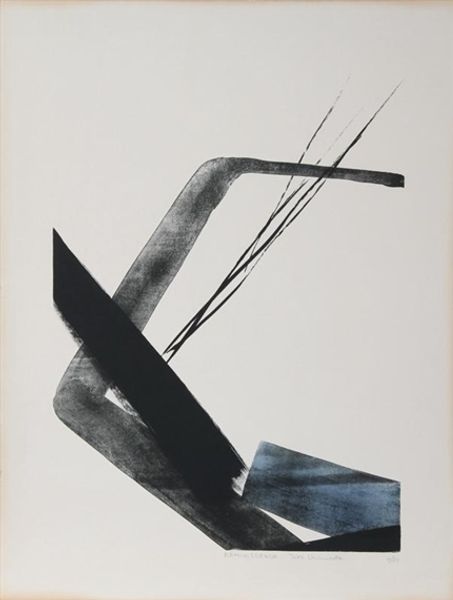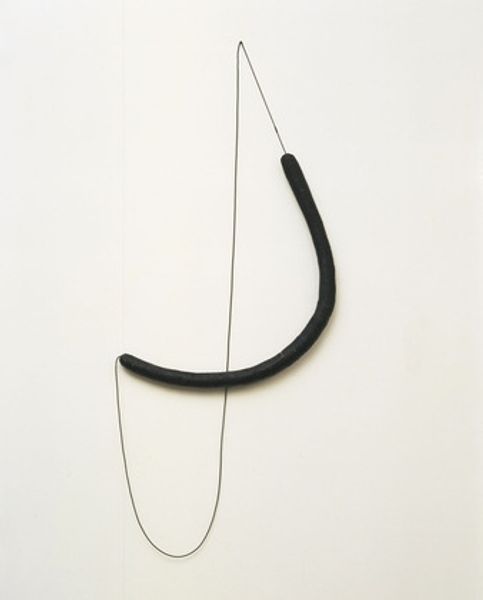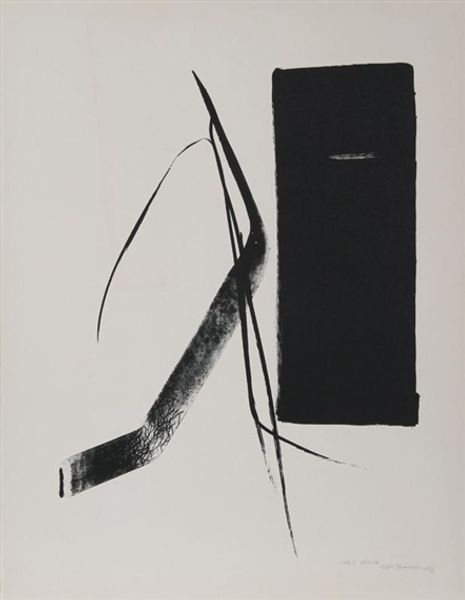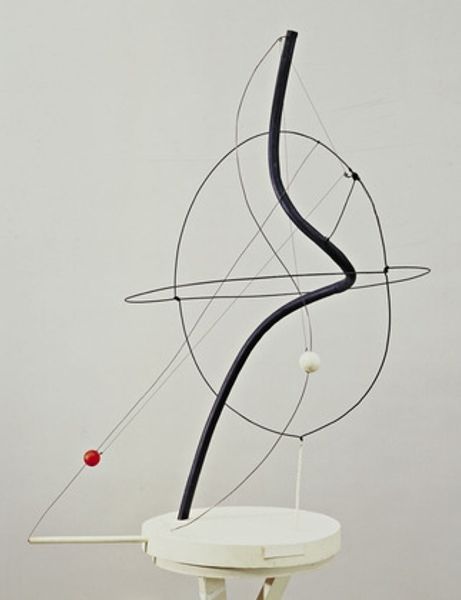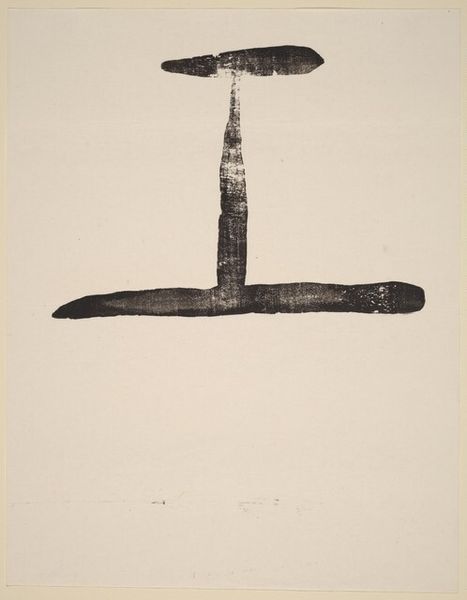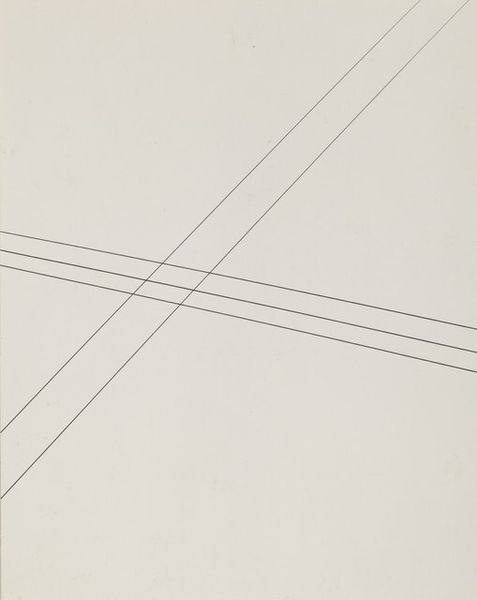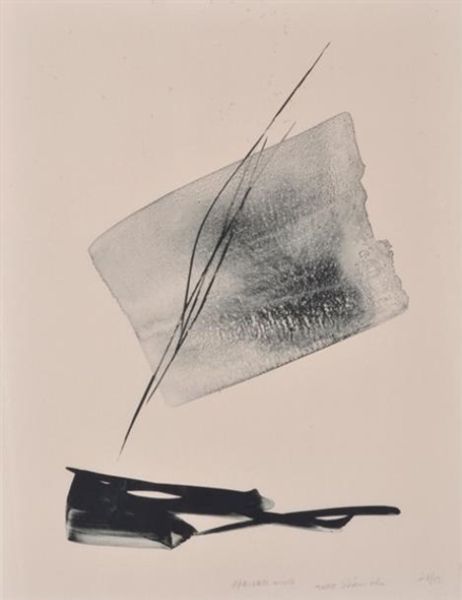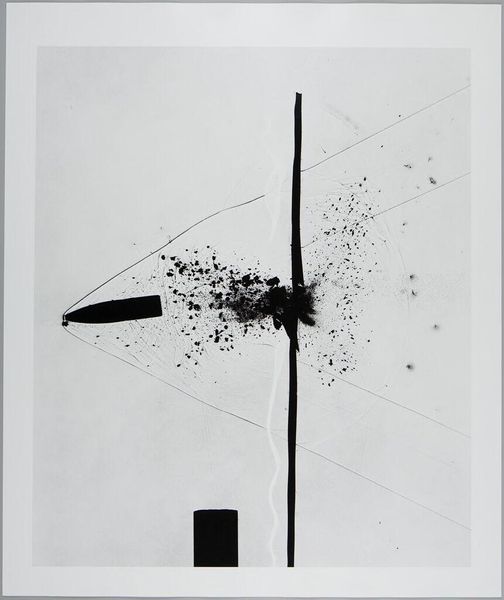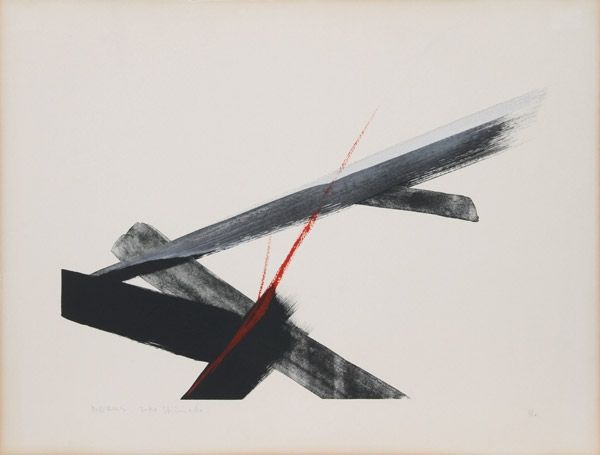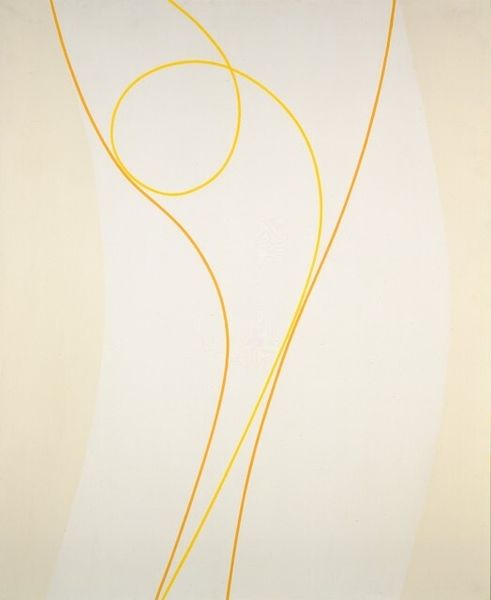
drawing
#
drawing
#
constructivism
#
geometric
#
abstraction
#
line
#
bauhaus
Copyright: Public domain
Curator: Here we have László Moholy-Nagy's "Construction," a drawing created in 1923 during his time at the Bauhaus. The artwork's aesthetic seems simple, reduced to lines and basic geometric shapes, yet invites you into deeper reflection. What are your first thoughts? Editor: It strikes me as a kind of diagram, or blueprint, for something not yet realized. It's stark, and the limited tonal range—the blacks, grays, and off-white—imparts a detached, almost industrial feel. It seems appropriate to display a very careful type of construction here. Curator: Exactly. Moholy-Nagy's constructivist approach was very deliberate. The materials—likely ink and pencil on paper—aren't particularly precious themselves, but the precision in execution hints at an interest in industrial modes of production and the potential for mass-manufacture. We should think of the significance of accessible materials. Editor: And think how revolutionary it was in the 1920s for an artist to so overtly embrace industrial aesthetics! The Bauhaus, of course, was wrestling with how art and design could serve society. This piece reflects those anxieties as well as hopes for a renewed future of art. Where does this leave the position of the public? Curator: I see this as part of a larger debate within art and culture surrounding the value of craft versus mass production. Consider the artist's role within capitalism! Moholy-Nagy valued utility. His constructions proposed that artwork need not be handcrafted nor require expensive material, instead could provide access to quality visuals for larger populations. Editor: Absolutely. The image’s inherent rationality spoke to the institution's project, but also served the social goals of education for artists who wanted to participate in reshaping postwar Germany. I can not but interpret its impact on education given that Bauhaus promoted collaborative projects to unite design, art, and technical construction. Curator: I agree; by consciously abandoning the conventions of artistic touch, Moholy-Nagy offered the creative blueprint not only for individual items, but for imagining new forms of collectivity, and new possibilities in their wake. What an important drawing. Editor: Yes, reflecting on "Construction," I'm left considering how profoundly artistic and social visions from a century ago still resonate within art making. It's impossible to leave unaffected by this experience, I am so glad for sharing it together.
Comments
No comments
Be the first to comment and join the conversation on the ultimate creative platform.
